#Senegalese boubou
Text



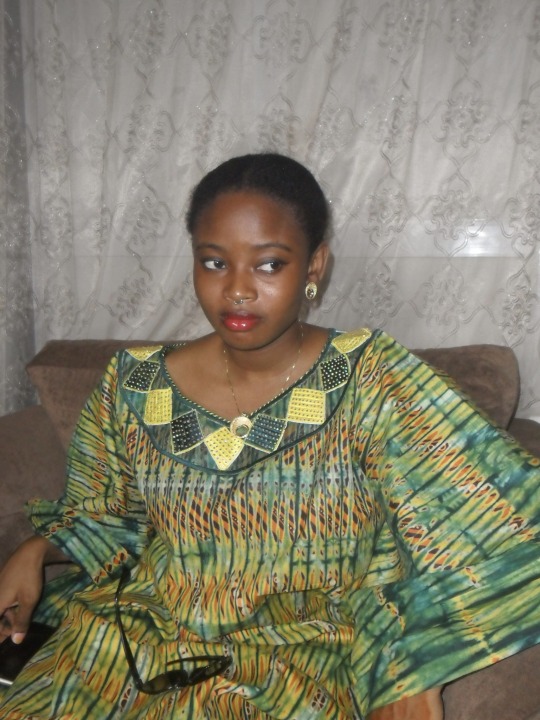
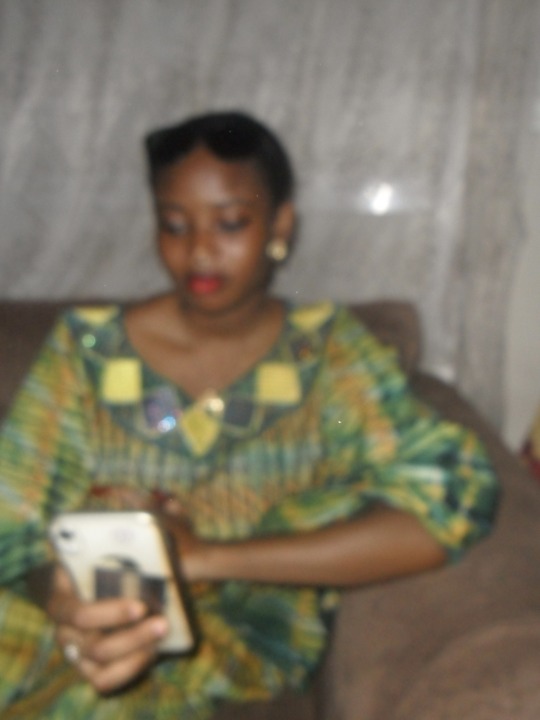

Eid Mubarak friends 💕💕💕
#the boubou is very much giving Senegalese 70s auntie#someone special got it for me#had to straighten my hair yesterday but it didn’t budge#at least i tried#the Eid is blessed and quiet#love love love
94 notes
·
View notes
Photo
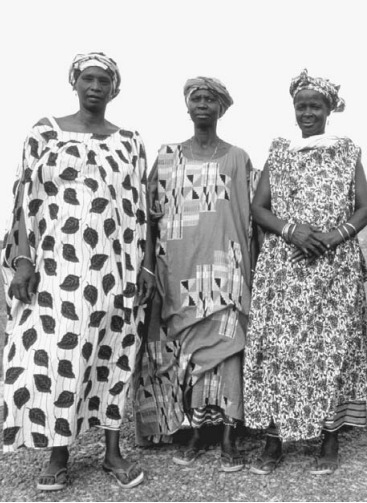
Senegalese women wear the Senegalese robe, or boubou.
Source: Valerie Steele (ed.) - Encyclopedia of Clothing and Fashion Volume 1 (2005: 176)
3 notes
·
View notes
Text
¿Cuáles son las diferencias culturales entre Camerún y Senegal?
🎰🎲✨ ¡Obtén 500 euros y 200 giros gratis para jugar juegos de casino con solo un clic! ✨🎲🎰
¿Cuáles son las diferencias culturales entre Camerún y Senegal?
Costumbres culinarias en Camerún
Las costumbres culinarias en Camerún son una mezcla única de tradiciones locales y experiencias culinarias traídas por colonizadores y comerciantes extranjeros a lo largo de los siglos. La comida en Camerún es una parte integral de la cultura y se considera un acto social que une a las comunidades.
Uno de los platos más populares en Camerún es el Ndole, que es una mezcla de hojas de ñame cocidas, cacahuetes molidos, aceite de palma y pescado o carne. Otro plato típico es el Suya, que son brochetas de carne sazonadas con especias y cocinadas a la parrilla. Además, el Miondo es una masa de mandioca que se sirve generalmente con salsas de cacahuetes o carne.
En cuanto a las bebidas, el té de hibisco es una bebida popular en Camerún que se sirve caliente o frío y se considera refrescante. La cerveza también es muy consumida en el país, con marcas locales que ofrecen una amplia variedad de sabores.
En Camerún, la comida se disfruta en reuniones familiares y celebraciones, y se considera una forma de honrar a los invitados y compartir la generosidad. Las costumbres culinarias en Camerún reflejan la rica diversidad cultural y la historia del país, y son un testimonio de la pasión y creatividad de su gente en la cocina.
Tradiciones religiosas en Senegal
Las tradiciones religiosas en Senegal son parte fundamental de la identidad y el tejido social del país. Senegal es conocido por su diversidad religiosa, donde conviven el islam suní, el cristianismo y las religiones tradicionales africanas.
El islam es la religión dominante en Senegal, practicada por aproximadamente el 90% de la población. La influencia del islam se refleja en la vida cotidiana de los senegaleses, desde las prácticas religiosas hasta la arquitectura de las mezquitas dispersas por todo el país. La celebración del Ramadán es un momento especial en Senegal, donde las familias se reúnen para romper el ayuno al atardecer y compartir comidas tradicionales.
Además del islam, el cristianismo también tiene presencia en Senegal, especialmente en las zonas urbanas y entre las comunidades de expatriados. Las festividades cristianas como la Navidad y la Semana Santa se celebran con fervor, y las iglesias católicas y protestantes son lugares de encuentro y reflexión para los fieles.
Por otro lado, las religiones tradicionales africanas también juegan un papel importante en la cosmovisión de muchos senegaleses. Estas creencias ancestrales se manifiestan en rituales, ceremonias y festivales que honran a los espíritus y ancestros, fortaleciendo los lazos entre la comunidad y la naturaleza.
En resumen, las tradiciones religiosas en Senegal son un reflejo de su rica diversidad cultural y espiritual, creando un mosaico de creencias que conviven en armonía y enriquecen la vida de sus habitantes.
Indumentaria tradicional camerunesa
La indumentaria tradicional camerunesa es un reflejo de la rica historia y diversidad cultural de este país africano. Cada grupo étnico en Camerún tiene su propio estilo único de vestimenta que representa su identidad y tradiciones ancestrales.
Una de las prendas más icónicas de la indumentaria tradicional camerunesa es el "boubou", una túnica larga y holgada que se usa tanto por hombres como por mujeres. El boubou suele estar elaborado con telas coloridas y estampadas, y puede estar decorado con bordados intrincados o detalles de encaje.
Otra prenda tradicional importante en Camerún es el "kaba", una falda larga y amplia que generalmente se combina con una blusa a juego. Tanto hombres como mujeres pueden usar el kaba, que es una prenda elegante y festiva que se usa en ocasiones especiales como bodas o ceremonias tradicionales.
Los estampados y colores vibrantes son una característica distintiva de la indumentaria tradicional camerunesa, y a menudo se utilizan para transmitir mensajes simbólicos o contar historias sobre la comunidad o la familia de la persona que la lleva.
En resumen, la indumentaria tradicional camerunesa es una expresión artística y cultural importante que sigue siendo valorada y celebrada en la sociedad camerunesa actual. A través de sus tejidos, diseños y colores únicos, la ropa tradicional de Camerún representa la rica diversidad y herencia cultural del país.
Festivales culturales en Senegal
Los festivales culturales en Senegal son eventos vibrantes y llenos de tradición que reflejan la rica diversidad cultural de este país de África occidental. Estos festivales no solo son celebraciones alegres, sino también oportunidades únicas para experimentar la música, la danza, el arte y la gastronomía senegalesa en todo su esplendor.
Uno de los festivales más destacados es el Festival de Jazz de Saint Louis, que atrae a artistas de renombre internacional y celebra la influencia del jazz en la cultura senegalesa. La Isla de Saint Louis se transforma en un escenario vibrante donde los asistentes pueden disfrutar de actuaciones en vivo y talleres de música.
Otro festival popular es el Festival de Danza Africana de Dakar, que reúne a bailarines y coreógrafos de todo el continente para compartir sus tradiciones y técnicas. Los coloridos trajes y la energía contagiosa de las actuaciones hacen de este evento una experiencia inolvidable.
Además, el Festival de Cine de Ouagadougou es una plataforma importante para el cine africano, donde se proyectan películas de toda la región y se celebran debates y seminarios sobre la industria cinematográfica en África.
En resumen, los festivales culturales en Senegal son una celebración de la creatividad y la diversidad de este país, y ofrecen a los visitantes la oportunidad de sumergirse en la rica herencia cultural senegalesa.
Creencias espirituales en Camerún
Las creencias espirituales en Camerún son diversas y profundamente arraigadas en la vida cotidiana de sus habitantes. Este país de África central alberga una rica amalgama de prácticas religiosas que reflejan su diversidad étnica y cultural.
Una de las creencias espirituales más prominentes en Camerún es la adoración a los antepasados. Muchas comunidades creen en la importancia de mantener viva la memoria de quienes vinieron antes que ellos, y les rinden homenaje a través de rituales y ceremonias especiales. Se cree que los antepasados siguen presentes en la vida de sus descendientes, protegiéndolos y guiándolos en su camino.
Además, el animismo es otra creencia espiritual común en Camerún. Según esta cosmovisión, todas las cosas en la naturaleza están animadas por espíritus o fuerzas divinas. Muchas personas realizan ofrendas y rituales para mantener el equilibrio con estos espíritus y asegurar la armonía en sus vidas y comunidades.
Por otro lado, el cristianismo y el islam también tienen una presencia significativa en Camerún, especialmente en las zonas urbanas. Muchos cameruneses practican una forma sincretista de religión, combinando elementos de diferentes tradiciones espirituales según sus necesidades y creencias personales.
En resumen, las creencias espirituales en Camerún son un reflejo de su diversidad y pluralidad cultural. Estas prácticas religiosas desempeñan un papel fundamental en la vida de los cameruneses, proporcionando un marco de significado y orientación en su día a día.
0 notes
Photo
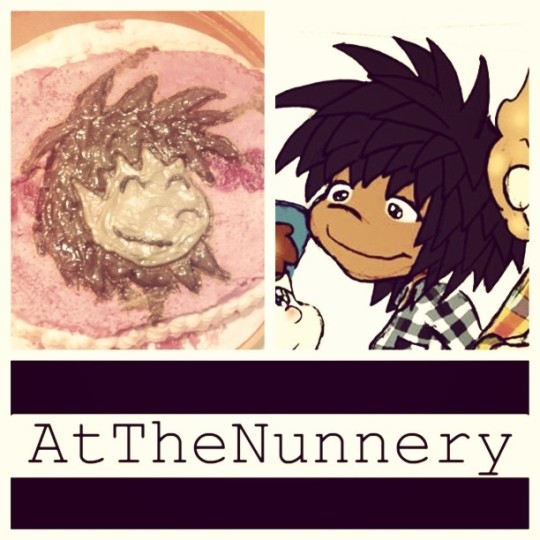
MY FIRST FANART!!!!! Courtesy of Boubou, my amazing fellow Senegalese babygirl
AtTheNunnery.net (August 31 2013)
0 notes
Text
WWD’s Guide to Shopping for Contemporary Senegalese Fashion in Dakar – WWD
WWD’s Guide to Shopping for Contemporary Senegalese Fashion in Dakar – WWD
PARIS — As Chanel prepares to unveil its Métiers d’Art show in Dakar on Tuesday, WWD takes a look at three contemporary designer stores to visit in the Senegalese capital.
Le Sandaga
Khadija Ba Diallo has always felt out of sync with her peers. While her brand, L’Artisane, is famous for its contemporary take on the traditional Senegalese boubou, the garment hasn’t always been fashionable.
“I’ve…
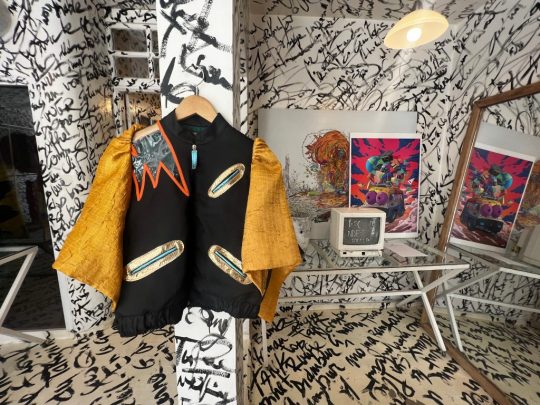
View On WordPress
0 notes
Photo
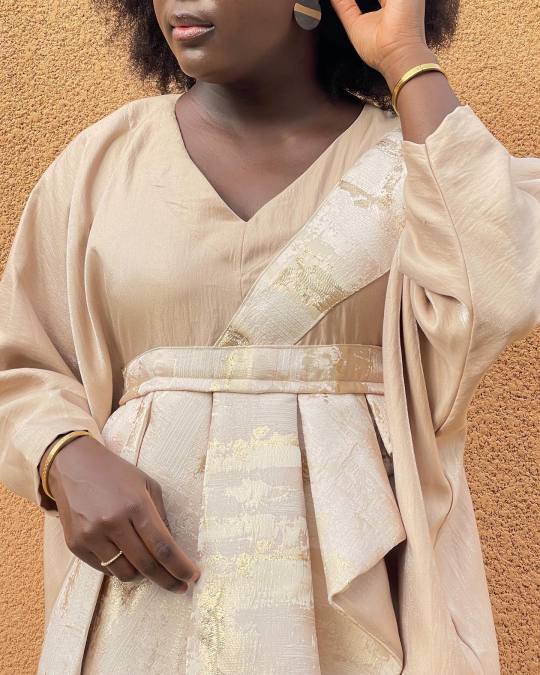
Details ✨ ⠀⠀⠀⠀⠀⠀⠀⠀⠀ #boubou #bouboudesign #tenuesenegalaise #africanprint #africanfabric #westafricanfashion #iwearafrican #africanfashionblogger #robesénégalaise #bouboubrodé #melanin #senegalese #senegal🇸🇳 #madeinsenegal #madeinafrica — view on Instagram https://ift.tt/im45Zq7
0 notes
Text

Hope I’m not too late posting my Eid photo.
#asma Kamara#blackouteid#black out Eid#eid fashion#ramadan#sierra leone#Senegalese boubou#senegal#Senegalese#west African#passion twists#african print#nature#greenery#plants#salone#mami wata#tie dye#embroidery
91 notes
·
View notes
Text
"Boubou design, le phénomène des réseaux sociaux *** BBC Afrique" on YouTube
youtube
2 notes
·
View notes
Text
Mamadou Ba’s wedding guest!outfit
(side note: another “yucky wedding” post! are you sick of it yet? you can mute/block the tag.)
Mamadou Ba is an OC, captain of both the Senegalese national team and Real Madrid. He wears a navy blue agbada (boubou/grand boubou) with gold filigree accents.
The agbada is a West African full formal attire that consists of three pieces of clothing: a pair of tie-up trousers that narrow towards the ankles, a long-sleeved shirt and a wide, open-stitched sleeveless gown worn over these.
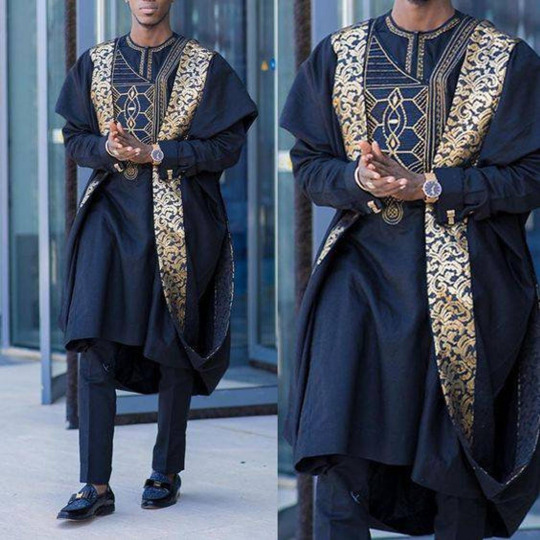
#yucky wedding#this outfit is the bomb#the visuals of this wedding are some serious business shit#everyone really dressed to impress
8 notes
·
View notes
Text
Know Everything About Mens and Womens African Clothing
An African continent is a beautiful place with an outstanding array of animals, people, and places. People have started wearing clothes soon after the first homo-sapiens evolved near about 180,000 years ago (mainly due to an 'Ice Age' which has affected the globe at that time and developed a need to cover themselves).
The first early clothes were made of animal skin, and took the form of leather coverings and furs as well as jewelry adornments created out of seashells, feathers, and ostrich shell pieces. But African dresses online are rich in designs and color and usually made of the high-end material.
What Material is Used for Traditional African Clothing?
Natural Mens and Womens African Clothing were made of treated animal furs, feathers, hides, skin, and tree barks. The clothes made of bark are used rarely for everyday wear, but few societies still use them for ceremonial purposes. Most of the African societies now weave clothes from the locally grown cotton.
In the Northern part, ladies also spin and weave camel and sheep wool. Other sources of fiber include flax and jute in West Africa and Madagascar, raffia palm in Central and Western Africa, silk in Nigeria, East Africa, and Madagascar. All of these fibers are dyed using mineral and vegetable dyes for clothing.
What are the Common Dyeing Methods?
The African weavers generate a broad variety of colored and patterned fabric; they also weave pain clothes. These clothes are either used for everyday wear or used for special purposes. The common dyeing techniques in Africa are ‘resist dye’ and ‘tie and dye.’ In a tie and die, the designs are first tied and stitched into cloth via raffia or cotton threads.
On the other hand, in resist die, the dyer makes a drawing on cloth via impermeable substance like a paste of cassava or candle wax. After that, they soak it into a solution made of vegetable dyes. For the different hues, the extracts from redwood, coal buts, camwood trees, etc. are used. Also, the motifs and designs for decorating fabric are related to a specific animal, event, proverb, event, etc. Others include Roman numeral and letters and line drawings of modern objects (like car, bicycle).
Types of African Clothing:
Below are the clothing types found in Africa:
- Abacost
-Alasho
-Aso Oke hat
-Balgha
-Bogolanfini
-Boubou
-Dashiki
-Djellaba
-Ethiopian suit
-Ghanaian smock
-Gomesi
-Gowni
-Head Tie
-Headscarf
-Isiagu
-Kanga
-Kanzu
-Kiondo
-Kitenge
-Kofia (hat)
-Koto
-Kufi
-Lamba
-Madiba shirt
-Mask
-Mitumba
-Senegalese kaftan
-Tagelmust
-Turkish cap
-Wrapper
What Kind of Clothes Do Africans Wear in Old Times?
The kind of clothing African wears differs by region. Diverse tribes throughout the continent pride on their national dress which they use it for special occasions. Natural mens African Clothing includes an apron or loincloth. It means that men just wrap a bark cloth over a belt and passed between the legs and ladies usually wraps around their breasts or waists. Raffia was used to sew together the separate pieces of bark cloth and also for grass skirts.
What Does Modern African Fashion Include?
With time, African fashion has been blended with European styles to make it suitable for daily attire. The modern outfits could be worn quickly to parties, work or even for a casual event. This includes pencil dresses, African print skirts, jumpsuits, trousers, playsuits, etc. You can visit the online stores to buy African dresses for men and women.
#African Dresses online#Buy African dresses for men#Natural Mens African Clothing#Womens African Clothing
2 notes
·
View notes
Text
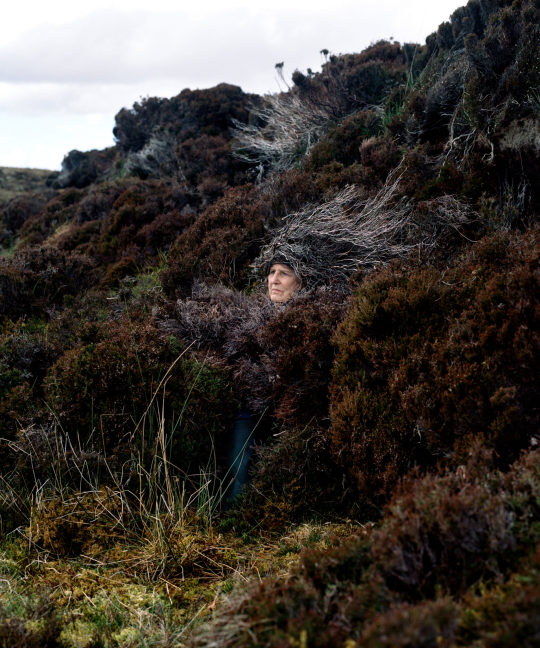
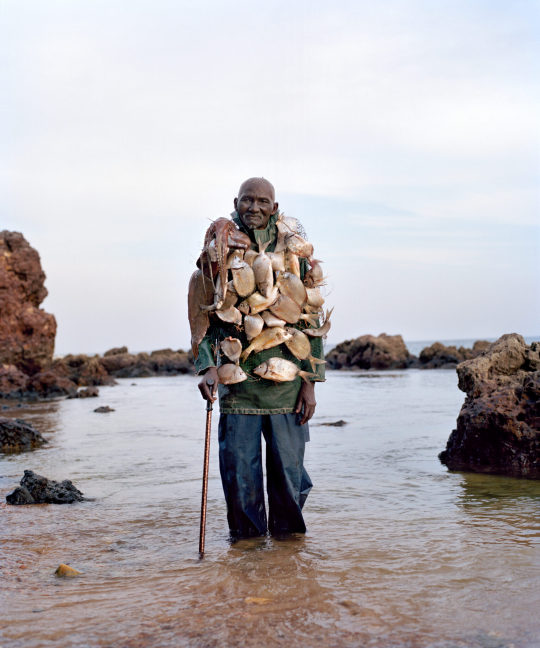


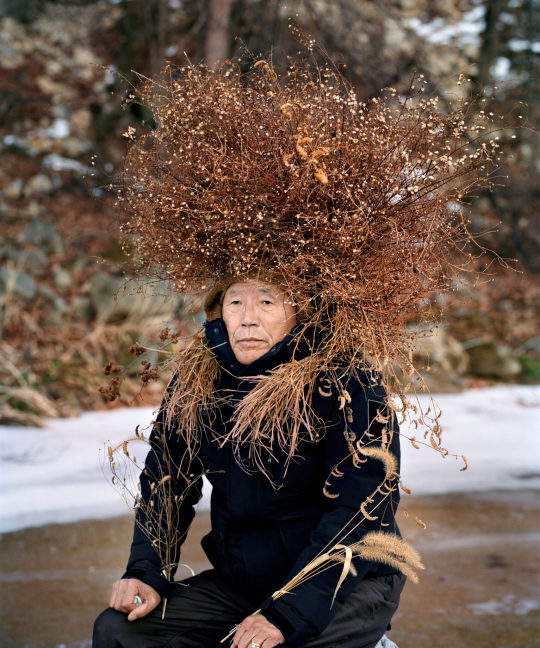

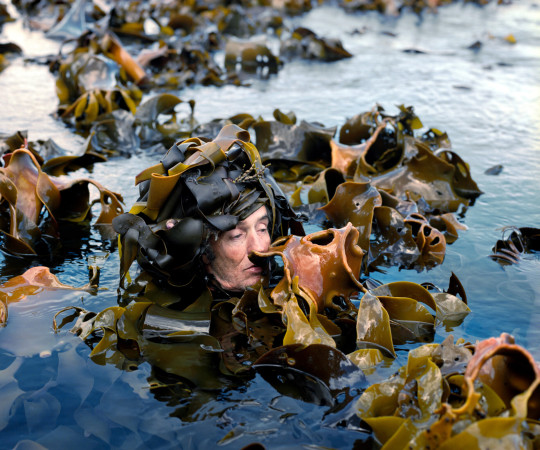
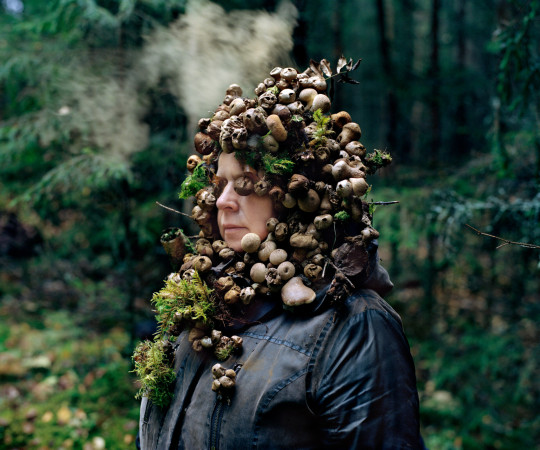
In ‘Eyes as Big as Plates,’ Sculptural Garments Camouflage Subjects in Natural Environments
February 11, 2022
ThisIsColossal.com
Grace Ebert
Hailing from fifteen countries, the individuals participating in Eyes as Big as Plates have backgrounds as varied as their surroundings: there are zoologists, academics, and librarians; fishermen, wild boar hunters, and Sami reindeer herders; and opera singers, kantele players, and artists. They’re tethered by the ongoing project, which dresses each figure in sculptural wearables made of organic materials that allow them to blend in with the surrounding landscape.
Launched in 2011 by Norwegian-Finnish artist duo Karoline Hjorth and Riitta Ikonen(previously), Eyes as Big as Plates hinges on the idea that it’s essential to explore how humans exist within nature. The portraits center on lone figures partially camouflaged with their backdrops or outfitted with imaginative garments constructed with objects found nearby. Boubou (shown below), for example, is a Senegalese fisherman who wears a mesh shawl of sea creatures, while North Tolsta-based photographer Andrea (above) is almost entirely masked by spindly branches and peat near her home. Every portrait comes after a conversation with the subject and a collaborative effort to find the proper location and attire.
The duo has now compiled dozens of photos in a forthcoming book that marks the 10th anniversary of the project. A follow-up to their sold-out first volume, Eyes as Big as Plates 2 is comprised of 52 new portraits, conversations with those featured, and field notes from their travels. “While transcribing the interviews for each of the collaborators here, we got to experience what many of them often say is the most exciting part: ‘ … just being there, looking at a familiar landscape like you’ve never looked at it before. Letting the surroundings wash over you,'” they write.
Eyes as Big as Plates 2 is currently available for pre-order on the project’s site. Some of the series is on view through June at the landmarked entry at 200 5th Avenue in New York and will be up this May at London’s Barbicanand at the Harbourfront Centre in Toronto in September.
Images : Courtesy of 'Eyes as Big As Plates'- Hjorth & Ikonen.
1. Andrea (Outer Hebrides. 2019)
2. Boubou (Tasmania. 2019)
3. Liv (Norway. 2017)
4. Momodou Toucoleur (Senegal. 2019)
5. Mr Oh (South Korea. 2017)
6. Neils (Faroe Islands. 2015)
7. Scotty (Tasmania. 2019)
8. Sinikka (Norway. 2019)
1 note
·
View note
Photo

Happy Friday ✨ ⠀⠀⠀⠀⠀⠀⠀⠀⠀ Je vous avais dit que j’avais hâte de vous montrer les tenues que j’ai récupérées au @gardendakar , alors je commence par celle ci ! Pendant mes vacances (oui enfin en vacances 😮💨) je compte vous montrer des pièces faites par des designers sénégalais et autres designers africains. Ce sont des tenues idéales pour la chaleur : fluides, colorées et amples. ⠀⠀⠀⠀⠀⠀⠀⠀⠀ On commence par ce boubou de la marque @habibahprestige qui a été sélectionné spécialement pour le @gardendakar. Comme vous le savez j’adore la couleur beige, alors sur un boubou j’ai pas hésité ! ⠀⠀⠀⠀⠀⠀⠀⠀⠀ Alors vous aimez ? ⠀⠀⠀⠀⠀⠀⠀⠀⠀ #boubou #bouboudesign #tenuesenegalaise #africanprint #africanfabric #westafricanfashion #iwearafrican #africanfashionblogger #robesénégalaise #bouboubrodé #melanin #senegalese #senegal🇸🇳 #madeinsenegal #madeinafrica — view on Instagram https://ift.tt/EaHPnY6
1 note
·
View note
Text
The Senegalses Way Of Dressing And Their History In Africa
The Senegalses Way Of Dressing And Their History In Africa
The people of Senegal are graciously known for their popular Senegalese attire which is ad. Senegalese kaftan is a pullover men’s robe with long bell sleeves. In the Wolof language, this robe is called a mbubb or kaftan and in French it is called a boubou. The Senegalese caftan is an ankle length garment. It is worn with matching drawstring pants called tubay in Wolof. Normally made of cotton…
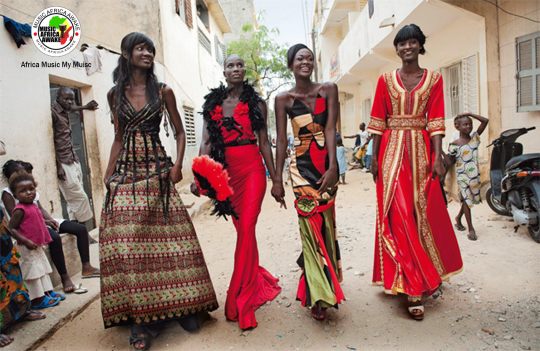
View On WordPress
0 notes
Photo
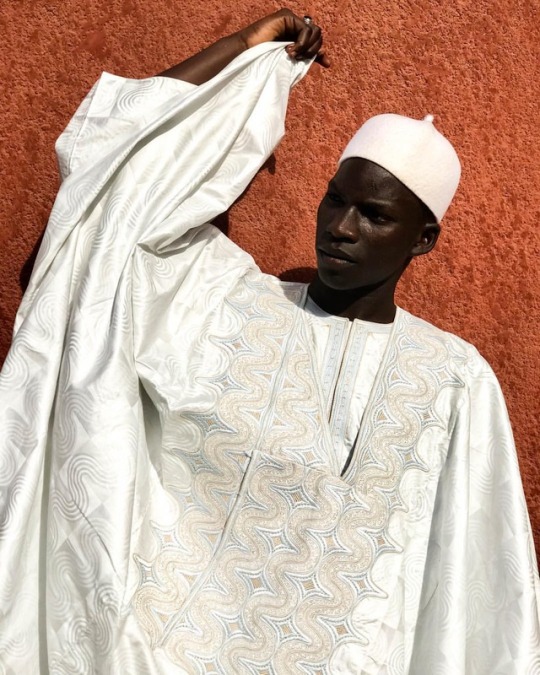
The ‘Wolof’ represent more than half of the Senegalese. They have a very rigid and stratified society. The Wolof outfits are very chic. The women wear ‘Boubou’ as well as men. The men also have ‘Kufi’ hats as in the picture. The clothes are very simple looking and with complicate designs. They are mostly appreciated by elders. 📷: @populeer . . . #photooftheday #shootislife #afreeroots #photographyinspiration #africanprints #healthyday #friends #africa #travel #art #Photography #passion #dakar #amazing #fashion #fun #smile #emo #aesthetic #moodygrams #senegaleseportrait #exploresenegal #picoftheday #views #flowers #goodvibes #friends #senegalite #happy #sunkissed #melanin #mensfashion (at Dakar, Senegal)
#travel#smile#photooftheday#afreeroots#views#dakar#exploresenegal#aesthetic#friends#emo#africa#art#moodygrams#fun#fashion#mensfashion#passion#goodvibes#healthyday#happy#photography#senegalite#picoftheday#shootislife#africanprints#melanin#senegaleseportrait#flowers#sunkissed#photographyinspiration
2 notes
·
View notes
Text
Jimmy Swagger ($)
"Custom made"
I grew up around the finest exotic tailors of West Africa. Nike, Jean-Paul Gaultier, Dior or adidas can never replace these Native African Giants. I could design anything from my fabric selection and say no more, they got to work, in their prime. Measurements calculated, off your physique.
if something wasn't well executed or the clients were not happy, readjustments were made until there was that satisfying smile on their face. Sometimes they would have 20 + clients per day, the pressure was almost as a street math Algorithm few could finesse and solve.
I had a personal tailor. Paris is filled with a Diaspora of creatives, from tailors to the french football Team 😊 there is a great presence of west Africans here that work hard just to get their bread up.
There's a place called châteaux Rouge in Paris, It's a Market place that sells everything thats central/west African (Food/all type of businesses) don't forget to try Senegalese Jollof rice with stew and shawarma from the lebanese. You will thank me later. The barber shops here are mostly owned by Nigerians and cameroonians, arabs. Middle eastern folks, jews and arabs are more in the butchery and corporate affair sector.
There are lots of Black owned business too, entrepreneurs ( African restaurants, Tailors/fashion boutiques/, sport etc...)
There is something about the longevity of custom made designs that take longer to make and is so much worth the wait rather than something already made and manufactured by Nike or Louis vuitton, sold in all sizes inside stores. Its all about their Brand names and strategic marketing, like getting colonised but black panther says "No we have enough Vibraniums for development". If You didn't have those air force 1 back in the day you couldn't sit with us even if you were my best friend 😂. I never revealed all my cards, but re-designing what I always wanted, my clothing line merchandise was just a side hustle to impact lives,people were inspired because of my Quality control delivery and the Art that spoke to them in ways I couldn't narrate for myself, it was a season, now it was time for me to think 5 years from now.. The Rich African culture depicted in each African textile is history finessed. From kaftans to "Boubou" timeless as olive trees.
God has someone for you that's custom made, just as the tailors get to work for each of their customers. that person you long for is worth the wait, in his timing. If you get distracted by things that are not part of your Goal in life, re-adjust your focus, think of it as Fast food slowly reducing your life on earth as you age while there's a variety of healthy recipes you could learn to cook from Pinterest and live healthier. It's like God gave us the fabrics and we stil praying for blessings.
Many of the places we run to when we feel tired are places that can never fulfill us but leave us more empty and worse than before.
The Samaritan woman at the well described in scriptures was not aware that Jesus was the only water that would never make her thirst again.
Why try to fit in a world of Nike and adidas when you are custom made?
There are plenty of brand names releasing specific products that don't even target the plus-size community, Beyoncé did it with her "Ivy Park" collection and the whole twitter caught flames and feelings .no one wants to feel left out, great! But see the good in the bad. in order for you to stand out you have to be different. Use the bad and create a masterpiece of your own.
You are Custom Made. Visit a tailor.
0 notes